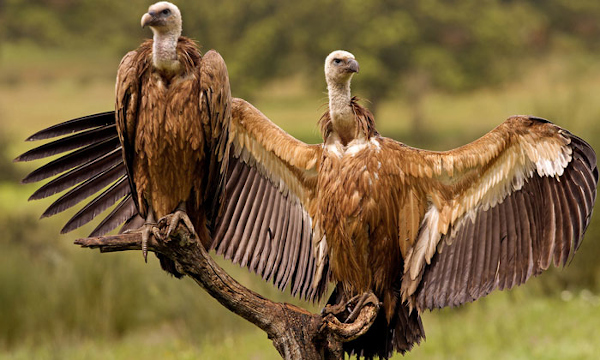In a first of its kind research activity in the country, the process of radio tagging vultures has started in the Panna Tiger Reserve (PTR) of Madhya Pradesh.
The data generated out of studying movement, habits and range of the scavenging birds of prey using the radio tag will be used to develop a concrete management plan for the conservation of the threatened species, field director of PTR, Uttam Kumar Sharma told The WEEK.
There has yet been no data-based study on vultures in India and this makes their conservation that much more tough. Therefore, the Wildlife Institute of India (WII), Dehradun has taken up the research project in association with the PTR, under which 25 vultures are to be radio-tagged.
While the process of radio tagging started about 10 days ago, the actual fitting of tags is expected to be done by a trained team from WII between December 5 and 10, the field director said.
There were about 650 vultures of seven species reported in the tiger reserve in the year 2018. Of these four are resident species while three are migratory, Sharma said. The movement and habits of vultures and especially their capacity to travel accurately on a route and find suitable climatic conditions for roosting has been a matter of deep interest among researchers and wildlife enthusiasts.
The utility of vultures as a natural scavenger cannot be understated, though the bird species has been long under threat due to many reasons, especially the use of painkiller drugs in cattle on the carcass of which they normally feed.
The data generated out of radio-tagging – like how far the birds travel, how much time do they stay in a place for feeding or other activities, the difference in habits, if any, between males and females, reproductive period habits – will help considerably for management plan when correlated with other available data on the preying birds, the field director said.
The entire process of capture and radio-tagging of the vultures in the wild is expected to take about a month, although actually fitting the small tag on the back of the vultures is expected to take mere 30-35 minutes, Sharma said.
Sharing details, he said that the Jhalar grassland in the PTR has been selected for the capture process.
“The method used for capturing is known as the ‘walk-in trap’ method and protocol has been developed by WII in consultation with VuPro in South Africa and Bombay Natural History Society (BNHS), India. The size of the trap cage, installed in the grassland, is 15m5m3m with a big front door and a small side door. The ‘un-baited’ cage will be kept for 1-2 weeks to let the vultures get used to it. Once vultures seem to accept the cage, it will be baited with fresh meat. This acclimatization with baited meat will be for 1-2 weeks. All the while the front door will be kept open,” Sharma said.
He added “the capture process will start once the vultures start feeding inside the cage without showing signs of discomfort. For fitting the tag, the backpack-fitting technique will be followed with a harness made of Teflon wire.”
Sharma said that the radio-tagging process is expected to be an experience in itself as the team of WII has trained with vultures in a zoo and this will be the first time when the process will be applied in the wild. The WII team will also train the PTR staff in the process later, the field director added.
Source: The Week
You may also like
-
New Heat-Based Approach To Cancer Treatment Can Reduce Chemotherapy Doses
-
Scientists Take A Major Step Towards Unification Of Classical & Quantum Gravity
-
India Graphene Engineering and Innovation Centre (IGEIC) Under the Vision of Viksit Bharat@2047 Launched
-
New High-Performance Gas Sensor can Monitor Low Level Nitrogen Oxides Pollution
-
Antidepressant Drug can be Repurposed for Treating Breast Cancer
